From growing the trees to selecting the right timber for the job, Andy Reynolds brings a lifetime of experience in forestry, carpentry and innovative thinking to timber for building. Here he explains how to source timber as responsibly as you can.
Previously published in the Small Woods magazine, this is an article about how to take responsibility for your timber purchases. In the wood and timber world that means buying locally. By this I don’t mean your local builders’ merchant but the nearest sawmill; that way the timber will have been sourced within the same country, and hopefully the same county.
Many people give lip service to buying local but then buy from multinational companies whose primary objective is to destroy all competition and put local people out of a job. Why would you support such behaviour? But many do. So this article is about using local timber for your projects and it is backed up by my book Timber for building: turning trees into houses published by Lowimpact.org.
Woodlands are so much more than a sum of the parts, but from a carpenter and joiner’s point of view the products of woodland management are their bread and butter. As such, I frequently bought fresh sawn locally grown timber for my business making staircases. I would air dry and then kiln dry this timber, and, as I was the end user, the quality and the drying was most important. There is no point using lower quality materials and risking movement and “shake! after the product has been fitted.
It is clear from my ensuing years working in forestry that my experience in the building and joinery industry has given me a distinct perspective on timber quality. I thought an article on what I look for when viewing logs and sawn timber might provide an insight for those who do not use sawn timber as part of their everyday work, albeit only a brief one.
The first consideration is species and for staircases I would be looking for those that grew quite large to get wide boards, those that would dry easily and be worked with comparative ease, and those that were affordable. One may think of Oak, but that takes some care in the drying and in large sizes is expensive. It is also unforgiving as far as working the dry timber, and for a staircase it is heavy.
For everyday stairs including those multi-winding stairs for loft conversions I ended up searching out large poplar logs. Poplar can grow large in size and the Black Italian varieties are ideal, as they don’t grow too quickly like some of the modern varieties. The old variety of Robusta was perfect as the slower growth gave reasonable close annual rings whilst the inner heartwood has lovely purple-red-brown streaks. Treat poplar heart with a walnut stain and that’s exactly what it looks like. The section of 12 inch poplar board in the photo below is almost clear except the small “cats paw” marks made by epicormic growth caused by varying light levels in a plantation.

Clear Poplar board
Comparing the drying properties of Poplar with Oak is useful in that various timbers have different ways for moisture to move through the timber. Here we need to introduce the term moisture gradient. This is where adjacent parts of a log can have different moisture contents leading to check and shake.
Oak is ring porous meaning that the moisture will only (or mostly) move around the annual ring structure. So to achieve even moisture content the drying needs to be slow and steady to avoid a moisture gradient and the drying faults that this can cause.
Poplar is diffuse porous and the moisture can move in all ways both along the rings and across them. In my book I go into a greater detail about this.
The first thing to do when faced with a log of the right species, girth, and length is to look for major defects. The first would be shake from the butt end caused by poor felling techniques, being left in the sun for too long, or from star or ring shake. (There is an article on this in the Spring 2017 edition of Small Woods Magazine). Whilst looking at the butt end of logs it is important to recognise signs of rot around the pith that is common with star shake.
Here it is also important to make sure the pith is reasonably central, as a log with an off centre pith will have compression and tension wood on either side and this would cause warping and winding during the drying process. The photo below shows how the tree reacts to lean and grows wider annual rings to counteract the extra strain put upon it. The shake is natural when a log dries in the round and as usual the shake happens from the side nearest the pith. It is for this reason that logs should be milled quickly after felling, especially sycamore.

Offset pith and shake
The next thing to check for would be signs of old dead knots, where large branches have been removed, or the “roses” in the bark showing where there was previous damage or branch pruning. See the photo of a bark rose on an Oak below. These stay visible for many years and are an indicator of such timber defects as that seen in the photo showing how the sapwood has grown over a pruned branch (see the aforementioned article in Small Woods Magazines).

A bark rose on Oak
This is all very well but you can see the wavy grain around the branch stub that will affect stability in drying and strength in a small joinery section. It might well be fine as a feature in a tabletop, especially 40 years down the track when it will be surrounded by heartwood.

A grown over branch stub
All this is an attempt to get an ideas as to what the timber is going to look like when it is finally milled. I remember a big poplar log in Linnel Brothers yard in Silverstone: it must have been shoulder height in diameter, 16 foot long, and not a defect to be seen except a slight single split across the but end. This produced lovely boards without a knot in any of them and with no bent grain near the butt end, so to my mind the tree had grown in the middle of a sheltered plantation where there was no need to grow large buttresses.
Just a quick word here about knots: there are four types, big and small, live and dead knots. Of the four, the big and dead are the worst, as big knots have a greater effect on the strength of any sawn section. Dead knots are surrounded by dead bark where the tree has grown around a retained dead branch. These are not connected to the rest of the timber and give no strength so can be pushed out.
Live knots especially if they are small are acceptable depending on what the timber is being used for and depending on the species, The timber of various Cypress species often has frequent small live knots as these trees are shade tolerant, meaning that the branches do not die off in shade but do not grow very large. The timber is quite stable and durable so I find it very good for window frames.
It is important to view the logs before they went in the mill whenever possible, but this was sometimes impractical so then the only quality check was to inspect each board for both growing and milling faults.
Boards with the absolute centre of the tree (the pith) in them are useless for joinery as shakes will always form from this point during drying, so these boards were rejected. The next thing was bad knots and areas of rot. Depending on what the joiner is making then the acceptable size of knot will vary, but there is always some timber movement around a knot.

The estate sawmill
The drying process is covered in my book but for some applications drying is not necessary. We built a lodge in our small meadow powered by wood and the sun. The main structure was 6 x 2 Douglas fir from Hanby estates near Louth (so grown and milled in the county in this case), as pictured above.
The frame shown in the photo below was built when the timber was green and so it was easy to work. When the timber was dry it was impossible to put nails in it without pilot holes, as it was so hard. Some of the boards on inspection were clear of faults and knots. I kept these to one side and dried them to make the window frames. For this use it is not necessary to kiln dry Douglas as 18 percent moisture will mean that the frames will not absorb further moisture and expand in use.

Lodge frame
If all this sounds like buying timber from a local sawmill is a complete nightmare, it could be no further from the truth – if some of the boards are not up to standard you can simply reject them. This is why I would inspect each one as I was loading up, flipping each board over to look at both sides. Those with bad knots, shakes, or with the pith in it were put to one side. The beauty of buying locally grown and sawn timber is there is a much wider variety available than that available at your local builders’ merchant.
 About the author
About the author
Andy Reynolds’ book Timber for building: turning trees into houses reflects his years of experience in the timber, construction and forestry industries. He provides open access learning on his non-commercial YouTube channel, is a forester, instructor, an author of several books, and a long-term practitioner of low-impact living.

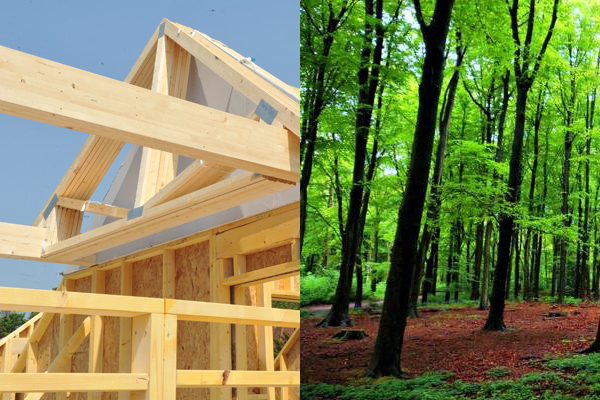
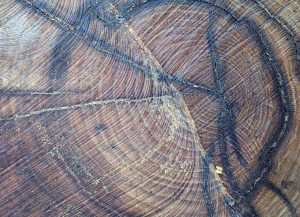
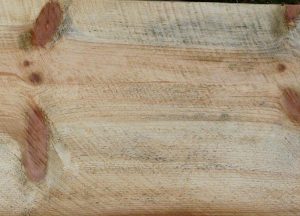

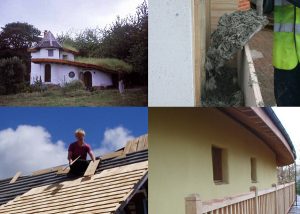

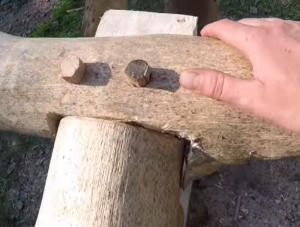
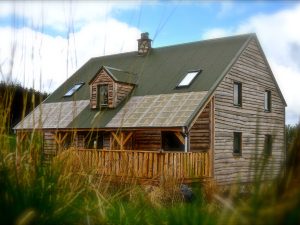
1 Comment
Hi Andy,
Read this article in Smallwoods and was interested in your use of poplar. I have 6 poplar trees in a 2 acre wood on the Warks/ Leics border and I have been looking for somebody who might interested in the timber, rather than use them for firewood. The trees are about 3ft in diameter and about 70 ft tall. Do you know anybody who might be interested?
Regards,
Graham Knight